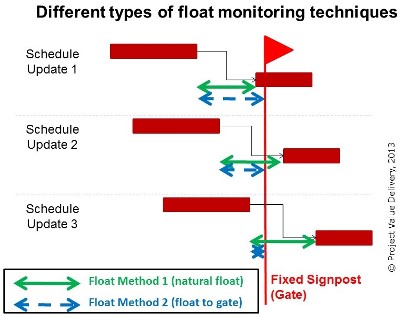There is an incredible value of using the available scheduling update information to track the evolution of the float to specific key Project delivery points. This simply involves a better utilization of available information without more updating work. It will often open the eyes of the Project manager early on impeding issues and allow timely actions to be taken to avert the pitfall. Thus Project Management can become responsive in anticipation instead of reacting after the event. Our new White Paper 2016-06 ‘How to Use Float Monitoring Techniques’ expands on this useful technique.
There are two ways of monitoring float:
- Monitoring activities’ floats as calculated by the Integrated Project Schedule program,
- Monitoring the available float with respect to a fixed date, e.g. a convergence plan gate or any other meaningful signpost.
We definitely prefer the second method to avoid creating ‘virtual float‘ and releasing pressure on project contributors.
This amazingly simple method is extremely powerful and allows much earlier anticipation of issues in Projects. Float monitoring leads us to quote one of our Project Value Delivery most favorite principles, which unfortunately has to be highlighted to too many Project teams during Project reviews:
“An activity that is delayed by one month every month will never happen!”
How many activities in your schedule re-forecast get simply pushed by another month every month? Read our new White Paper 2016-06 ‘How to Use Float Monitoring Techniques’ to avoid this.
Find all these principles of Advanced Project Scheduling exposed in a comprehensive manner in our new Handbook,  Advanced Scheduling Handbook for Project Managers (now published – click on the link to see it on Amazon!)
Advanced Scheduling Handbook for Project Managers (now published – click on the link to see it on Amazon!)


